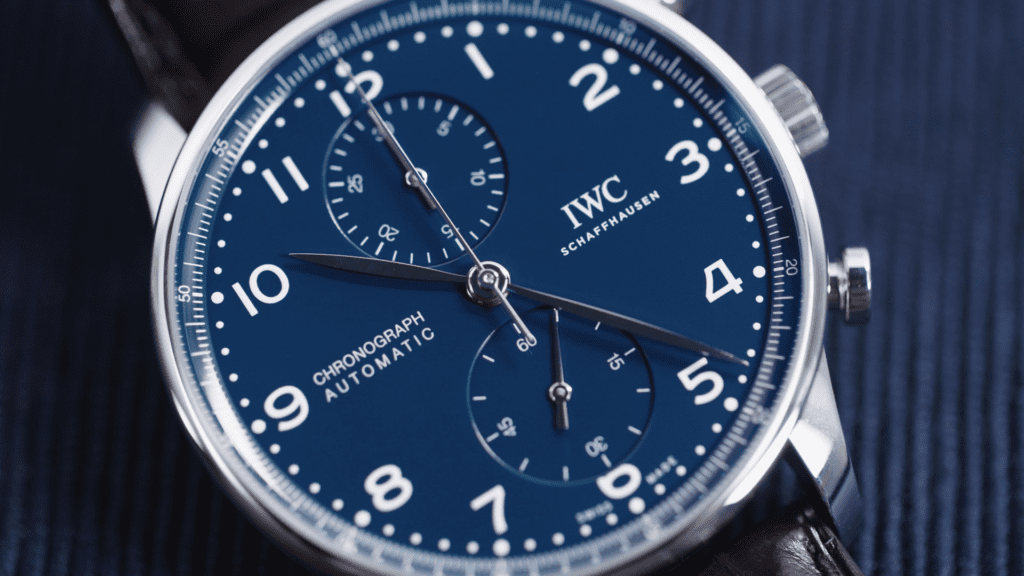Video Transcription
IWC is a company with a storied history that continues to impress the horology world with each new update. Within this video we will forego the complete overview of IWC as a brand and instead focus on the most famous watch family, the Portuguese or as it was renamed in 2015 at the Portugieser.
In this video we’ll discuss:
The history of the model
Key features of the Portuguese
Take a look at some of our favorites.
IWC or international watch company was born in 1868. At a time when most Americans went west searching for gold Boston-born watchmaker, Florentine Aristo Jones went east searching for his treasure. The 27-year-old went fairly far east, all the way to Schaffhausen Switzerland, in order to meet his goal of producing high-quality watches for the American market. After a few changes of hand Ernst Jakob Homberger took over the company in 1905. Under him two watch families are created that remain icons to this day. The Pilot’s Watch and the Portuguese.
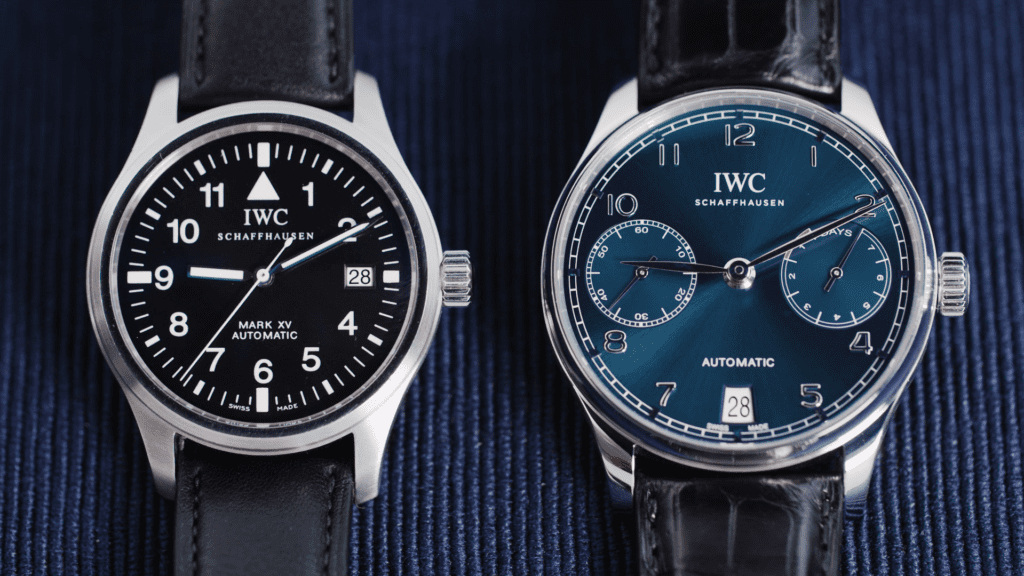
The Portuguese, specifically, was born during a trying time in the watch market. At the beginning of the 1930s the export watch market declined dramatically due to the devastating and global effects of the Great Depression. To avoid dying altogether hamburger and IWC pivoted to a less targeted European market, Portugal. Within Portugal the now legendary Rodrigues and Antonio Teixeira made a very special request. They and other Portuguese men wanted a large wristwatch with all the timekeeping precision of a pocket watch.
The history of the model
The answer: The model 228, later named the Portuguese was born in 1939. World War II disrupted its arrival to Portugal, but the watch did reach its target audience in 1950, and the watch wasn’t an initial success. It seems that IWC and the Teixeira’s were a little ahead of the game. At the time, the watch was much bigger than people were used to, and the market needed a little time to catch up but fear not for the Portuguese.
In 1993 to commemorate the 125th anniversary of the brand IWC brought the Portuguese back to life. This limited series was almost the exact same watch that has been created for the Teixeras, including the same caliber 9828 movement. The only key difference was the now numerical font.
Two years later in 1995 the Portuguese line gained a minute repeater and a rattrapante chronograph.
In 1998 IWC launched the Portuguese chronograph reference 3714, which some considered to be the most coveted of the family. The new millennium brought with it many updates and launches to the beloved watch.
In 2000 the Portuguese came with an extra-large 5000 caliber, which can run for seven days and features a Pellaton automatic winding system.
2003 brought us the Portuguese perpetual calendar with a newly designed perpetual calendar movement and an exclusive hemisphere moon phase display.
In 2004 the Portuguese family welcomes the Portuguese Tourbillon Mystere and in 2010 the Portuguese Yacht Club Chronograph is reborn. Originally released in 1967 the Yacht Club was one of the most successful IWC watches and now the Yacht Club brings a sportier touch to the Portuguese line.
In 2011 IWC presents the most complicated mechanical wristwatch ever. The Portuguese Sidereal Scafusia, with a patented constant force Tourbillon, and individually calculated astronomical displays. Each of these watches is made to order.
And then in 2015 for the Portuguese’s 75th birthday it gets a new name, The Portugieser, and a newly designed 52000 caliber movement. This new collection sets technical and aesthetic standards for all large watches in the world.
Key features of the Portuguese
Now that we know it’s past, let’s discuss key design features of the Portuguese family. Originally the defining features of the Portuguese were a pared back dial, Arabic numerals in an art deco esque font, and oversized sub dial at six o’clock, and a thin bezel. However, the reference 325 had multiple iterations the dials could be black or silver, numerals could be Roman or Arabic, and the design moved from Art Deco to more of a Bauhaus look. Now it’s defining characteristics are deco style Arabic numerals, slim leaf shaped hands, and a railway style minute track. Dials always feel capacious even when housing multiple complications, and the case is never anything other than oversized. Now here are some of our favorite Portuguese watches.
The IWC Portuguese chronograph 150 years limited-edition
The Portuguese chronograph is one of the best designed chronographs there is. Keeping with the Portuguese style, the dial design is so clean. The classic 41mm Portuguese case perfectly houses the IWC caliber 69355 automatic winding column wheel design. This particular chronograph is a limited edition celebrating 150 years of IWC and features a stunning blue enamel dial. Up next is the:
IWC Portuguese automatic
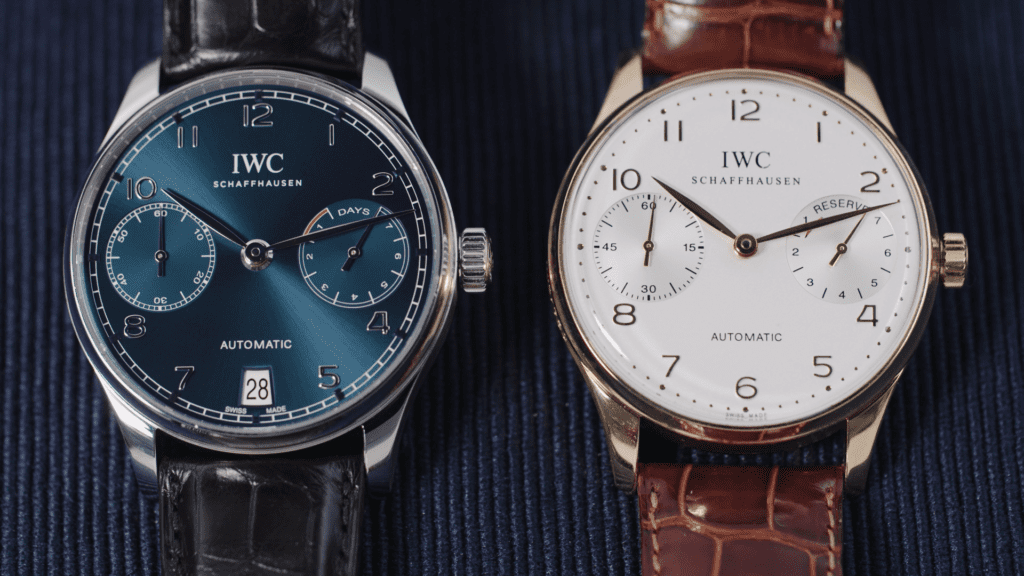
This is one of the simpler looking Portuguese models, but don’t let that simplistic design fool you. This watch features an impressive seven-day power reserve thanks to twin barrels. It also utilizes the IWC Pellaton winding system this system uses pawls instead of gears to separate the winding rotor from the barrels and minimizes shock to the gear train. And even though the Pellaton winding system was invented over 50 years ago IWC continues to push the envelope by producing this one in a highly resistant ceramic. And just for fun here’s a slightly older IWC automatic in gold. This dial is even cleaner thanks to the lack of the date at six o’clock, but both of these watches, at 42 millimeters, don’t feel too plain. The design just works. Now it’s time for some of the heavy hitters in the Portuguese line. These are where you can really see IWC flexing their prowess.
The IWC Portuguese Annual Calendar
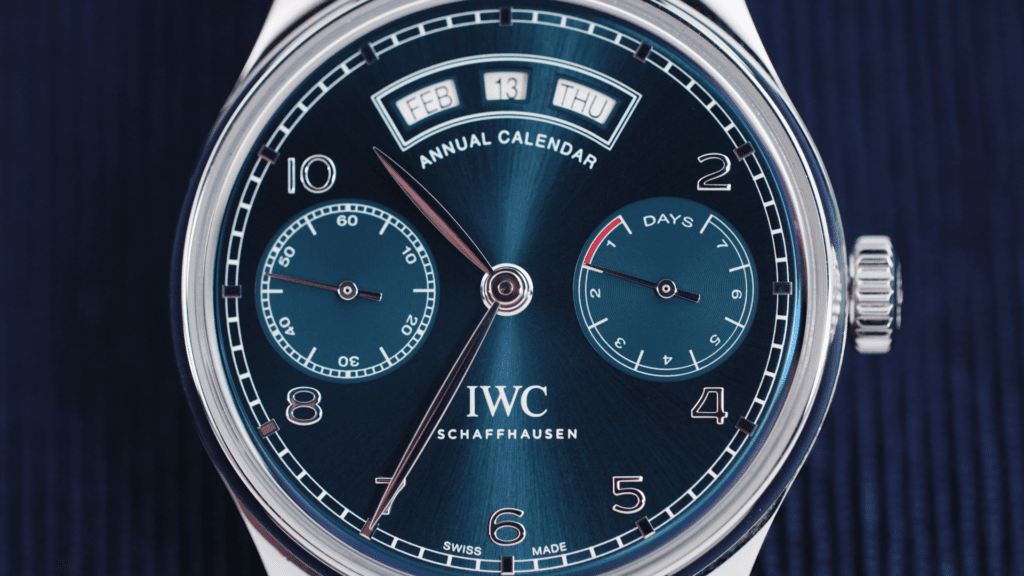
Housing the same 52000 caliber base as one of the automatics we just showed. The seven-day power reserve and Pellaton winding system are robust enough to power such a complication as the annual calendar. The simplicity on the dial is maintained by adding all of the information at 12’clock in the three apertures. The 44-millimeter case is as impressive as the annual calendar and is fitting for the Portuguese. Last, but certainly not least, is the:
IWC Portuguese Perpetual Calendar
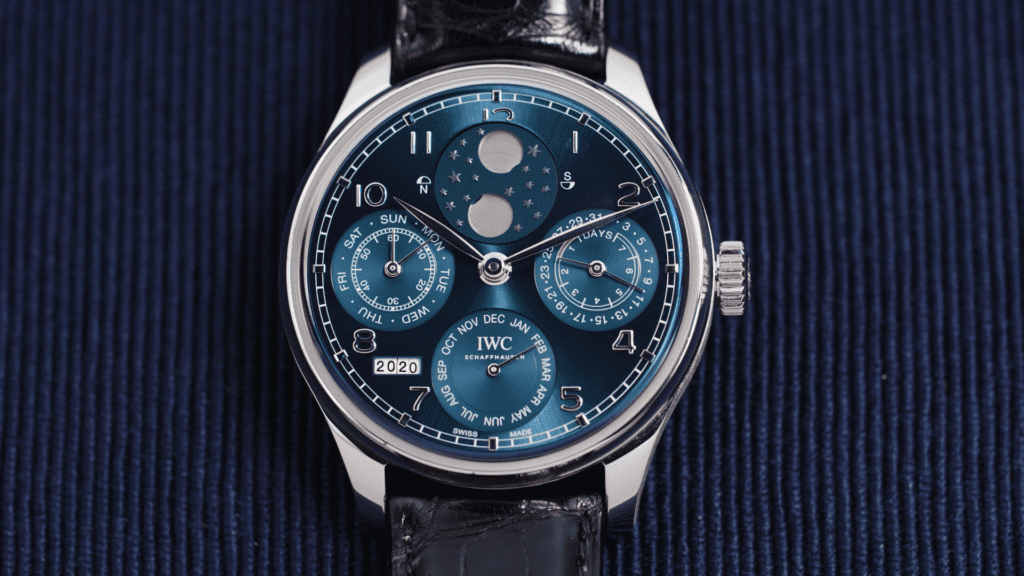
The biggest difference between an annual and a perpetual calendar is the perpetual accounts for leap years, but IWC didn’t stop there. They also added a moon phase that even accounts for both the northern and southern hemisphere. This watch, similar to the annual, is powered by the 52000 calibre family movement, and now features a solid gold rotor. This watch is just so well designed, laid out, and constructed. It is quite the Grail watch.
IWC’s forward-thinking design, adversity when Styles didn’t prevail, and consistent innovations help us all see that old dogs can learn new tricks, or more aptly that classics can and should continue to surprise us. After this video I’m confident you can see why so many add Portugiesers to their Grail lists. Let me know which ones on yours and as always thanks for watching.
Get More Articles Like This in Your Inbox
We're constantly creating great content like this. So, why not get it delivered directly to your inbox? By subscribing you agree to our Privacy Policy but you can unsubscribe at any time.





